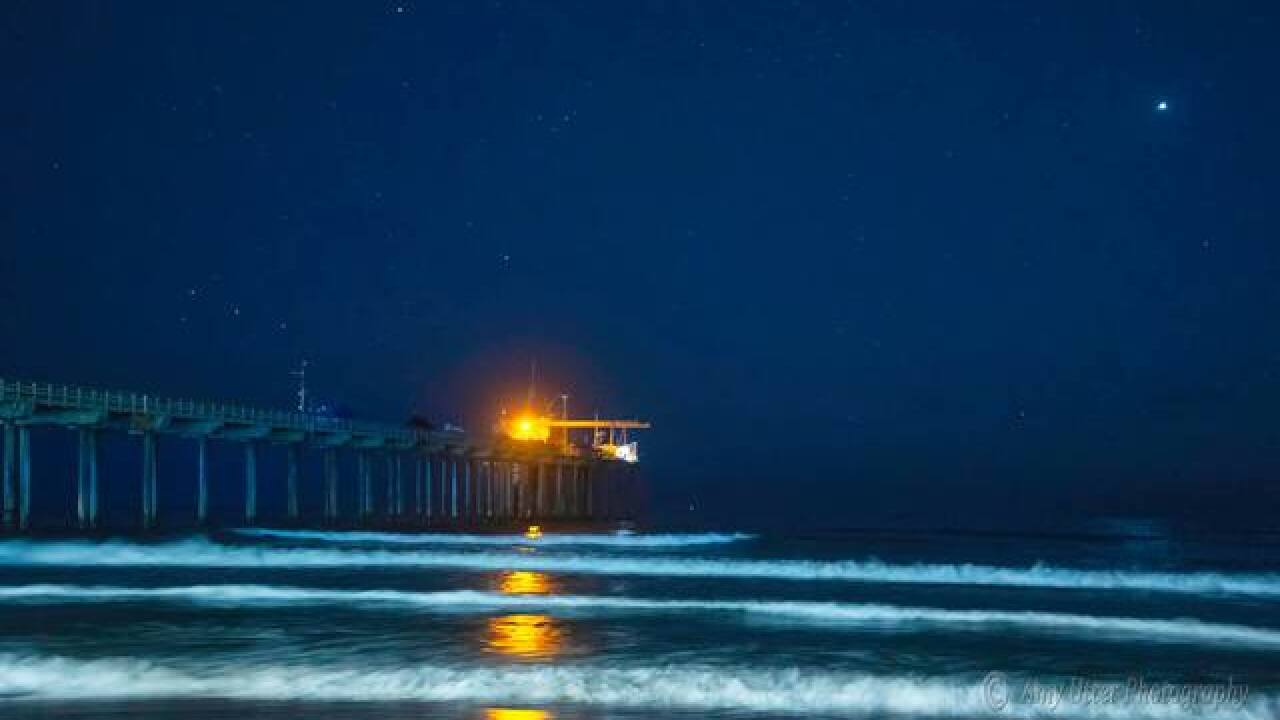(KGTV) - Catching the red tide is a rare, unpredictable, and fun event for the entire family.
If you can't bring everyone out to the event, you can always bring the red tide home. Scripps Professor Peter Franks, of the Integrative Oceanography Division, offered up an easy step-by-step guide of how to experience the science behind the marine event:
- Fill a clear water bottle with some water from the beach (best if you collect it around 12 p.m.)
- Take it home, and keep it in a cool, dark place. The dinoflagellates bioluminescence - they create their own light when disturbed. But they only do this at night (if they created light during the day it would be invisible, as the sunlight is too bright.)
- So, after the sun goes down, lock yourself in a dark room with your water sample. You probably have a bathroom with no window (this would be ideal.)
- After your eyes have adjusted to the dark (a minute or two), give your bottle a shake. You should see some blue sparkles of light. Try putting your electric toothbrush in and you'll get an even better light show.
- Spill some on the countertop, and let the spill absorb into a paper towel - you'll get a great light show around the edge of the paper.
- But the best one - and save this for last, because it's fatal - is to add a little vinegar to the bottle. You'll get an amazing (though, terminal) light show.
RELATED: Red tide creates eerie neon glow along San Diego coastline
The phytoplankton organisms in red tides react with a bioluminescent chemical reaction when jostled as a way to warn predators, to lure prey, or communicate within their species.
The chemicals that cause the light flashes are stored in little bags in the organism cells called "vesicles."
In the latter experience, the lowered pH caused by the vinegar causes the vesicles to burst, and all the chemicals mix, creating a flash of light.



